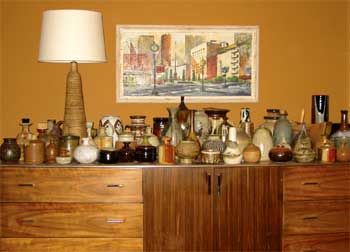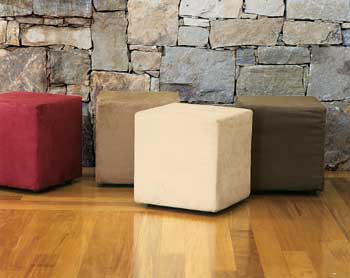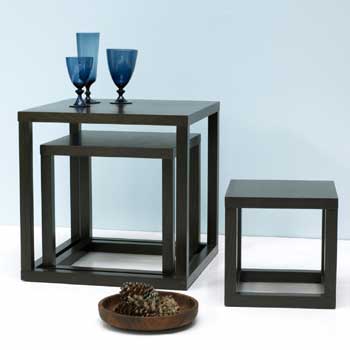Modern Furnishings - Page 3
 |
|
|
  |
|
|
For example, a collector of pottery or other small objects may want to consider grouping pieces together in one area, rather than scattering them randomly throughout the room. According to experienced designers, this approach allows the eye to view the entire collection as one large composition or object rather than many tiny ones. It also helps to turn what could appear to be chaos into something with visual order and interest—the whole becoming greater than the sum of the parts.
"Your pieces should not overpower the room," cautions Eichler owner and industrial designer Jerry Escobar. "If you have lots of things to display, you should create a visual piece en mass and organize them so the whole thing is like one unified piece of art."
Lifestyle and taste changes that have occurred since mid-century modern homes were built have also had a major influence on how today's homeowners select and purchase furniture. Neil Gomoluh, a designer and sales associate with Scandinavian Designs' Santa Rosa store, believes that being eclectic and coordinating the buying experience around special pieces already in the home is what today's home furnishing process is all about.
"Long gone are the days where everything in the house was the same," points out Gomoluh. "We have also found that Eichler owners tend to have an eye for design and will mix pieces with more confidence in their own judgment."
He also notes that "the digital camera was a great invention, and some of our customers will bring in photos or throw pillows to show what they have, and then we can help them coordinate something that will work with it."
Another common and successful design strategy is to select an object to serve as a focal point and then create a design around it. "A focal point is something in the room that draws your eye immediately upon entering," explains Severin Secret of JCA Architects in San Jose. "It could be a leather couch, a red Eames chair, a Nelson clock, or a special painting over the fireplace. It could also be a coffee table, such as something really unusual that you make the center of attraction by positioning neutral pieces around it."
Renewing or upgrading a modernist living room need not become all consuming or expensive either. Sonia Taylor, public relations manager for the West Elm retail furniture chain and catalog company, observes that "everybody wants to design their house with flair and show off their individual personality without having to spend $30,000 just to do their living room."
As a practical approach, she suggests that customers consider opportunities to purchase items that are multi-functional. "Our cubed sectional sofas, for instance, are extremely popular and flexible," Taylor says. "You can put them together, or set them apart. Ottomans also provide this opportunity. You can use them as a foot rest, or to sit on, or as a coffee table."
"And it's not just young people who are doing this," adds Taylor. "We often see customers in their 50s and 60s furnishing [this way for] a home office or a second house."
So as the journey towards renewing that living room begins, think back to the original intent of modernist design. Consider what it was all about, and what it means for today's living. Perhaps Eichler's original slogan says it best—'Discover life in an Eichler.' And remember Matt Kahn's words of caution: "You aren't discovering life by denying it."
Why are the Classics So Timeless?
What makes the design of classic modern furniture pieces so utterly timeless? And why are they and the many affordable replicas based on them still valued and mass-produced after all these years?




